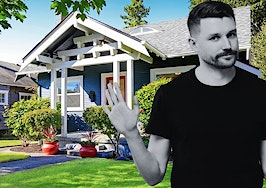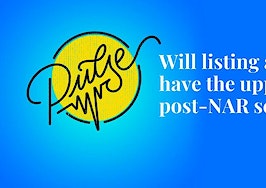In these times, double down — on your skills, on your knowledge, on you. Join us Aug. 8-10 at Inman Connect Las Vegas to lean into the shift and learn from the best. Get your ticket now for the best price.
This post was last updated May 23, 2023.
Building a sustainable and profitable business generally includes real estate farming, especially right now. That’s because with housing inventory at all-time lows, generating listings is more important than ever. Whether you’re just starting out building your first geographic real estate farm or rebooting an existing one, these steps will help you grow and thrive.
Step 1: Find the right neighborhood
Success in farming hinges on choosing the right neighborhood. Agents should base this decision on two factors: The first is whether there is a dominant agent in the neighborhood already, and the second is seeing whether there are enough sales in the area for the numbers to make sense.
If more than 25 percent of the homes listed in the neighborhood over the past 12 months have gone to one agent, then I would consider that neighborhood to have a dominant agent.
We aren’t afraid of competition, but why attempt to take market share when another agent already has a foothold in the neighborhood? The ideal farm does not have a single agent with more than 15 percent of the previous 12-month listings taken. We would consider this a segmented market and ripe with opportunity.
The next step is to evaluate the numbers. We want to make sure there are enough listing opportunities over the next 12 months to merit our investment of time and effort. Here is the formula I use for an example neighborhood of 300 homes with an average sales price of $400,000.
We anticipate in normal market conditions that at least 10 percent of the homes in a neighborhood will sell in a typical year. For this example, we would estimate 30 listings available to agents for the year. Based on an average sales price of $400,000 and 30 listings anticipated in the coming year, there is $12 million worth of listing-side sales volume expected in the coming year.
For this example, let’s use an average listing-side commission rate of 2.5 percent, meaning an average gross commission of $10,000 per average $400,000 sale. For this example, let’s use an agent’s split of 75 percent, meaning each listing-side net commission would be $7,500 on a $400,000 sale.
Because we chose a segmented market, we anticipate with the marketing plan (to follow) that we should be able to take at least 10 percent market share, so in this case, three listing sides sold for a net commission to the agent for the year of $22,500. We should take more market share and pick up a buyer or two from having the listings, but we want to be conservative for this example.
What are our expenses to farm this neighborhood? It might not be on the front of the marketing, but I like to use $2 per month per house. This will be a combination of marketing expenses to be discussed in the next section. So, in this case, that would be $600 per month or $7,200 for the year.
Based on this evaluation, the breakeven point is selling one listing for the year. With our plan of action and understanding that we should be able to take at least 10 percent market share in 12 months, the numbers for this neighborhood appear to make enough sense to proceed.
Step 2: Become the most knowledgeable agent of your farm
This marketing plan will yield listing appointments and conversations with sellers. To take advantage of those opportunities, you must have an in-depth understanding of this neighborhood.
Having in-depth knowledge means you should:
- Study historical sales data to be able to speak intelligently with owners about the last 10 sales in the neighborhood.
- Know the average days on market and the average price-per-square-foot of those sales.
- Have seen every home currently for sale in the neighborhood.
You never get a second chance to make a first impression. Make sure you know every detail of home sales in the neighborhood. This will give you the confidence to speak boldly and with clarity when a potential seller calls to ask your opinion about their home.
Step 3: Gather contact information for the homeowners
The next step is harvesting the contact info for all owners in the neighborhood. The mailing lists should be easily available through your local county’s property appraiser’s website. To effectively market to a neighborhood, however, we need phone numbers as well.
To obtain phone numbers, you can use a service such as Cole Realty Resource or an app such as ForeWarn. An accurate database will help maximize marketing effectiveness.
If you are going to farm a neighborhood you personally own a home in, you may be able to obtain an owners list from the HOA. These lists can be golden because they often include email addresses, phone numbers and accurate mailing addresses.
Step 4: Develop a marketing plan of action
In marketing, “the seven-times factor” says that people have to see an ad seven times before they notice it on average. The key to effective farming is consistency. Your marketing repetition will build your reputation as the trusted source for real estate information in the neighborhood.
The marketing to the neighborhood not only needs to be consistent but of value. Ask yourself, “What would I find valuable as a homeowner?” Also, ask, “What form of communication would I prefer?” Our plan of action will include direct mail, email if you have addresses, phone calls and special events.
The core marketing principle for farming is direct mail. We want to send one direct mail piece to each owner at a minimum of one per month. These should be a mixture of sales activity pieces, just-listed/just-sold cards, open house announcements, trend explanation pieces for the neighborhood, and special events announcements (more info below).
Always include a call-to-action of free CMA or automated email every time a home comes on the market, goes under contract or sells in the neighborhood.
The next core piece of farming marketing is phone calls. Meaningful real estate-related conversations drive our business. These calls should not be sales pitches but rather informational.
For instance, call to let the neighbors know when a house is sold for a record price in the neighborhood. Simply say:
“This is Sally Agent with ABC Realty. The house at 123 Oak Street just sold, and it has really moved the home prices for the neighborhood. We are just calling to let you know your home’s value has gone up. Also, the sale had multiple offers, and we have other buyers who are wanting to buy in the neighborhood. Would you happen to know whether any of your neighbors might consider selling?”
Other calls include letting the neighbors know about new listings, open houses or special events planned for the neighborhood.
Although personal calls are best, you can use a tool such as Slydial to record a single message and send it to all neighbors’ voicemails. Slydial allows you to upload a group of phone numbers and record one voicemail to drop in the owner’s voicemail box for around 10 cents per number. This is a great way to leverage your time in a large farm area.
The last way to increase your recognition and influence in the farm area is through hosting or coordinating special neighborhood events.
Here are a few of the best examples I’ve heard of special neighborhood events:
- Coordinating a food truck night in the neighborhood and providing free desserts with branding.
- Host a movie night in an area park.
- Schedule an ice cream truck at the pool or some other amenity area in the neighborhood for adults and kids on a Saturday.
- Hire a photographer to provide free family photos to families who schedule an appointment in a neighborhood park.
- Molly Slagle in Houston, Texas, used an exciting spin to provide pet photography for the neighborhood.
The bottom line is that real estate is a contact sport. The more you contact and connect with your targeted farm, the more relationships you will build and the more business you will ultimately do. Take action! Develop a farm! Nurture your farm, and you will reap a harvest of listings.
Jimmy Burgess is the Chief Growth Officer for Berkshire Hathaway HomeServices Beach Properties of Florida in Northwest Florida. Connect with him on Facebook or Instagram.













